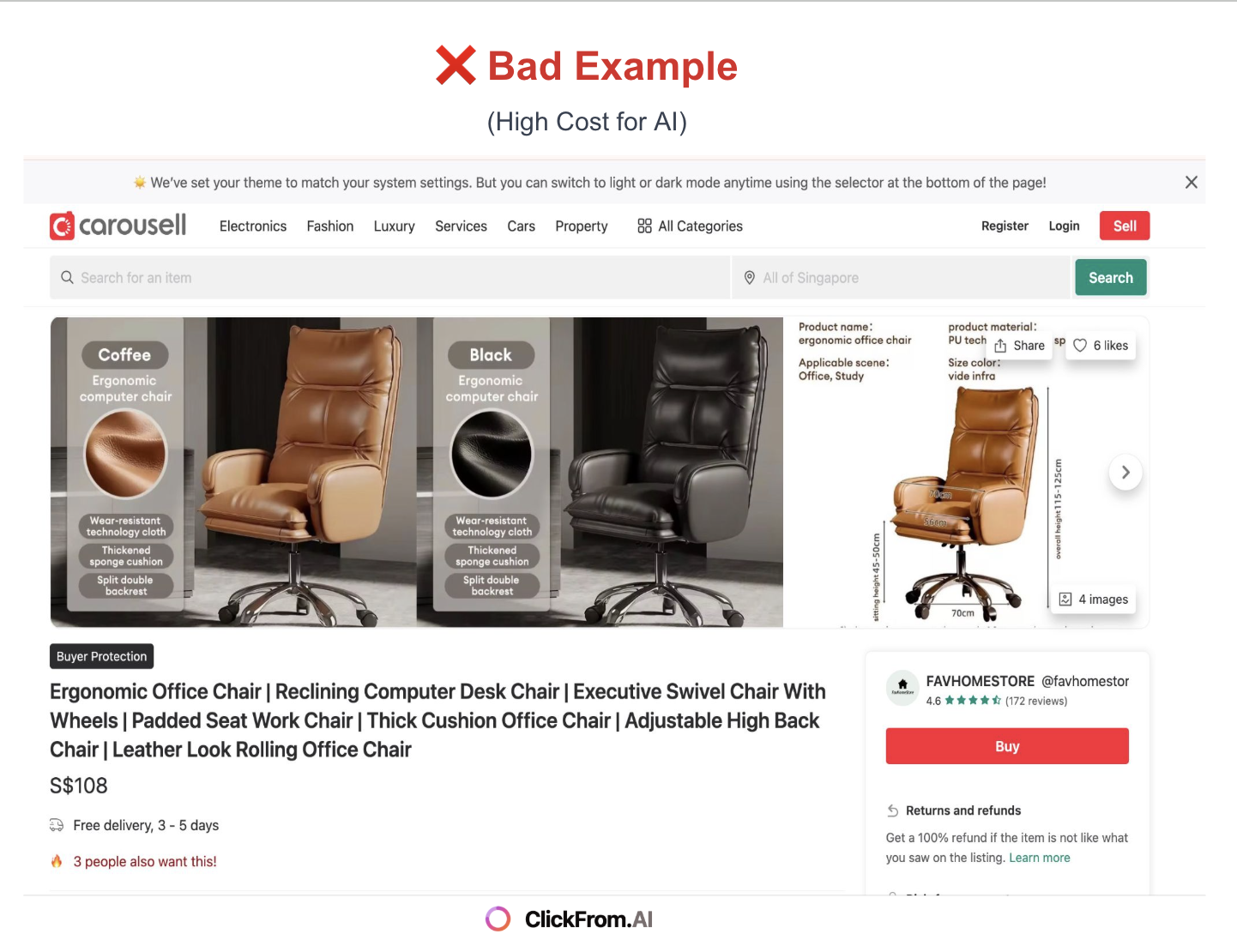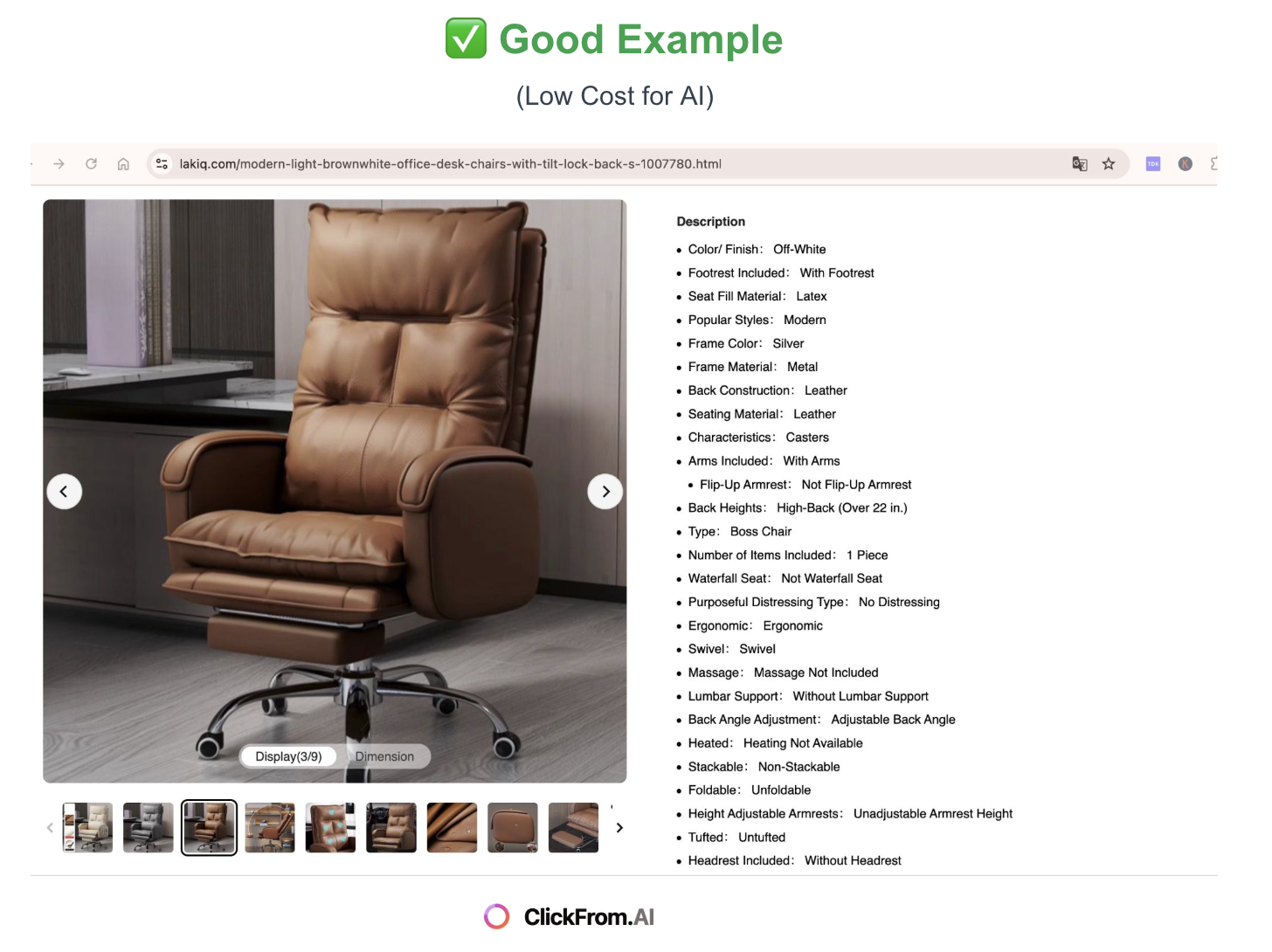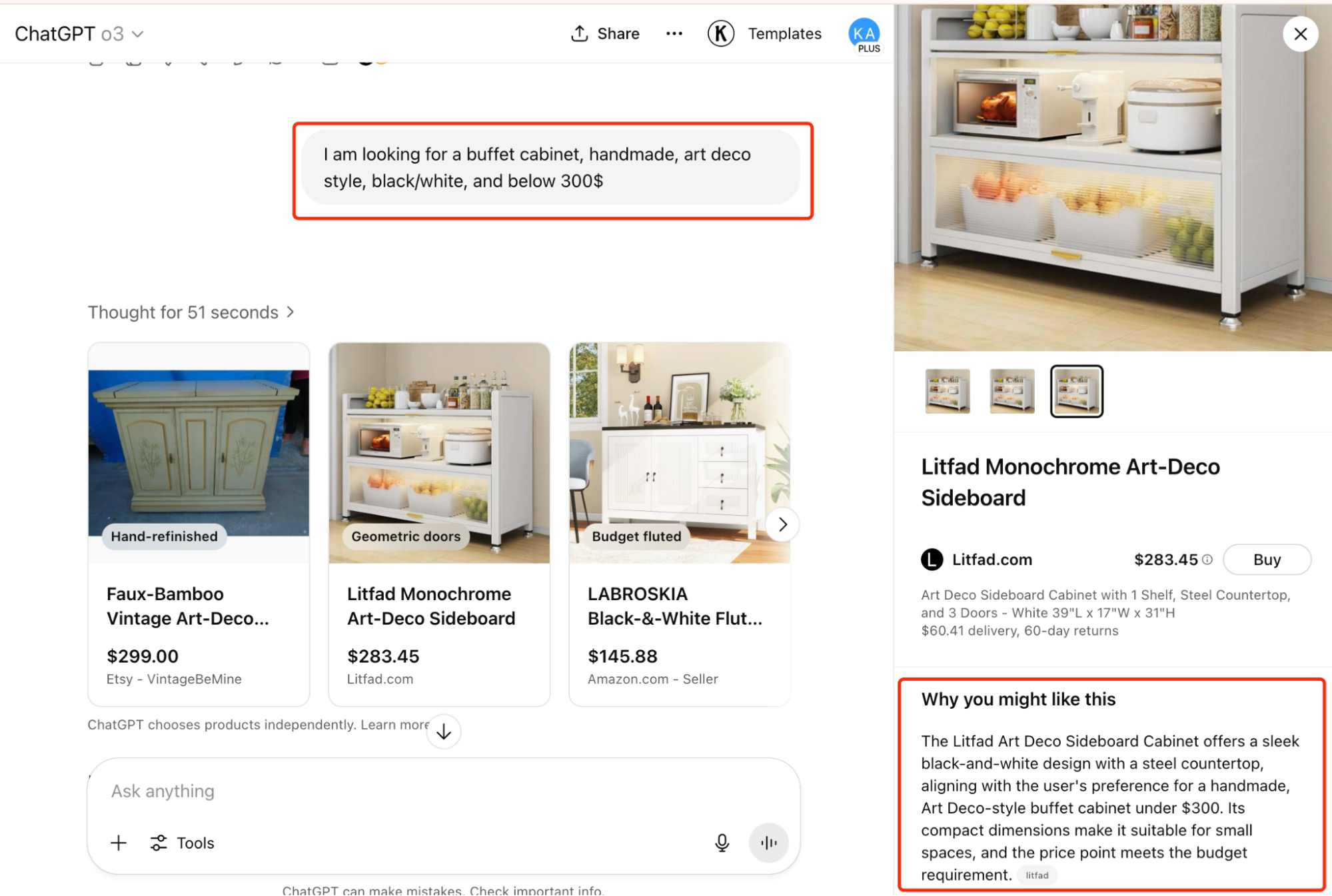Imagine a potential customer asks an AI, "What's the best solution for [a problem your product solves]?" In the past, your goal was to appear on the first page of search results. Today, your goal has shifted: you want your product to be featured directly in the AI's answer, cited as a credible, recommended solution.
This is the new battleground of e-commerce. It's a strategic shift from Search Engine Optimization (SEO) to Answer Engine Optimization (AIO), or what we can call AI Visibility. This article will break down the new rules of AI-driven traffic and provide three core strategies you can implement today on your most familiar Shopify pages.
AI Visibility is about making your brand and products so authoritative and easy for AI models to understand that they choose to use your information to construct their answers. While SEO focuses on ranking in a list of blue links, AIO focuses on becoming part of the direct answer itself.
The foundation of AIO is a concept you may already know: E-E-A-T (Experience, Expertise, Authoritativeness, and Trustworthiness). AI models like those powering ChatGPT and Google's AI Overviews are trained to be expert researchers. They scour the internet to find the most credible sources to back up their claims. To an AI, a website that strongly demonstrates E-E-A-T isn't just another data point; it's a trusted knowledge base.
In the world of traditional SEO, marketers often obsess over high-volume, broad keywords. In the AIO era, this logic is being turned on its head. AI chatbots are designed to answer specific, detailed, conversational questions—which are inherently long-tail.
A user is less likely to ask an AI for "shoes." They are far more likely to ask, "What are the best waterproof commuter shoes with good arch support for standing all day?"
This detailed question represents a real, urgent, and high-intent need. The core of an effective AIO strategy is to shift your focus from competing for broad "traffic keywords" to capturing these high-intent "question keywords." Your website content must be built to precisely answer these specific questions. Fortunately, this is where your highest-converting traffic will come from.
 High-conversion long-tail keywords give smaller websites a chance to gain visibility and drive conversions, even when competing with Amazon and Etsy
High-conversion long-tail keywords give smaller websites a chance to gain visibility and drive conversions, even when competing with Amazon and Etsy
Pic 1: High-conversion long-tail keywords give smaller websites a chance to gain visibility and drive conversions, even when competing with Amazon and Etsy.
To understand how to optimize for AI, let's think like an AI product manager. Your main goal is to provide the most accurate answer at the lowest possible computational cost. How would you design your algorithm?
Understanding these AI preferences also means knowing how to properly configure technical files like robots.txt and LLMS.txt - topics covered in more detail in our AI crawler guide.
 A web store that packs all product details into one large image
A web store that packs all product details into one large image
Pic 2: A web store that packs all product details into one large image
 Another store shows the same product with clear headings, lists, and paragraphs
Another store shows the same product with clear headings, lists, and paragraphs
Pic 3: Another store shows the same product with clear headings, lists, and paragraphs
Based on these principles, you can implement a powerful AIO strategy using the three page types you work with every day on your Shopify store.
Your goal is to transform your product page from a sales pitch into the ultimate encyclopedia and decision-making hub for that specific product.
 An outstanding product page with high AI visibility
An outstanding product page with high AI visibility
Pic 4: An outstanding product page with high AI visibility
Source: https://buydropstop.com/products/dont-drop-and-drive
Your goal is to elevate your collection page from a simple product grid into a guided solution for a specific customer scenario.
Your blog is the best place to capture long-tail question traffic and position your products as solutions. The key here is not just to be the source of the answer, but to make your product part of the answer itself.
In traditional SEO, we were taught to place text or image links within an article that point to a product page. In the AIO era, this is no longer enough. If your well-written article is used by an AI, a simple link will likely only land you in the small, often-ignored "Sources" list at the bottom of the answer.
However, by embedding a "product card"—with an image, title, price, and key features—directly within the flow of your article, you dramatically increase the probability that the AI will feature that card as a visual, actionable part of its response. This gives your product the most compelling placement possible, allowing a user to click straight through to your store. It shortens the path to conversion from a long journey to a single click.
For more specific guidance on preparing your store for ChatGPT's shopping features, see our detailed guide on ChatGPT Shopping: 4 Urgent Steps Shopify Sellers Can't Afford to Miss.
 A product card within the blog that displays complete information
A product card within the blog that displays complete information
Pic 5: A product card within the blog that displays complete information.
The rise of AI marks a fundamental shift for Shopify sellers—a move from a "traffic mindset" to an "answer mindset." We are no longer just optimizing for keywords; we are building knowledge systems that AI models can trust and reference.
By thoughtfully optimizing your product pages, collection pages, and blog posts, you can gain a significant advantage in this new landscape. You can position your brand to be the one that AI turns to, making it your most effective and authoritative salesperson.
Start by reviewing your website today and ask yourself one question: Is my content good enough for an AI to confidently recommend my product as the solution to a customer's problem?